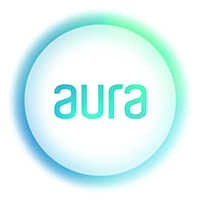Implementation¶
History¶
Originally coined backbone-aura, the code and API of aura has undergone many reiterations and has, at least in theory, became agnostic from backbone.
In the first iterations of Aura, a single sandbox, or instance of the Aura app would control multiple widgets on a page. The widgets would inherit dom, an abstraction of jQuery / zepto by the facade and use the mediator as pubsub between widgets.
- The behavior has since been fundamentally changed. Today:
- before: aura termed sandbox as the instance of the aura app itself, now: every widget is a sandbox with its own context.
- before: aura extensibility was cloudy now: aura has a clear, concise and tested extension architecture
- permissions has been removed from core
- EventEmitter2 pubsub from hard coding
- bower for browser libraries
- jasmine -> mocha unit test
- basic code standards, contribution guidelines, etc.
Overview¶
Aura
EventEmitter2 is the default pubsub system. Permissions has been removed from core and will come back as an extension.
Application Core¶
The Core has a number of responsibilities. Powered by the Mediator pattern, it:
Provides the ability to manage a widget’s lifecycle (start, stop, cleanup).
This is powered by work we’ve done to expand on top of RequireJS 2.0’s undef feature for unloading modules. Aura works around RequireJS’s limitation of not being able to resolve a module’s dependencies to allow the easy unloading of an entire widget. Unloading a widget equates to removing it from the RequireJS caches, deleting instance references to them (which can lower memory) and of course, cleaning up any DOM elements the widget was using.
Implements aliases for DOM manipulation, templating and other lower-level utilities that pipe back to a library of choice.
The idea here is that rather than interfacing with the libraries directly, accessing the Core aliases (through the Sandbox) allow developers to switch out the libraries they use at a later date with minimum impact to their application. We currently provide a bare-bones implementation of the jQuery library.
The core uses AMD modules requiring dependencies to Aura’s facade, which abstracts DOM libraries like jQuery so they can be later switched out with a smaller or faster library in the future.
Exposes Publish/Subscribe functionality that can be used for decoupled communication between parts of an application.
Similar to the concept above, our Pub/Sub implementation can be easily replaced with that of another library and it should still work fine.
Sandbox¶
Powered by the Facade pattern, the Sandbox:
Provides a limited, lightweight API layer on top of the Core for the rest of an application to communicate through.
Rather than exposing say, the entire API for a JavaScript library, we instead only expose those parts that developers in the project will need or are safe to use. This is particularly useful when working in teams.
The Sandbox includes a permissions layer, allowing you to configure permissions for widgets such as whether a specific widget has the right to render to the page etc.
Modules¶
All of the files and demo widgets in Aura use AMD as their module format of choice
These can of course be used with r.js for compilation and optimization if concerned about too many script files (compilation should always be used for production-level apps if using AMD in any situation)
Whilst not an Aura feature, we also take advantage of RequireJS 2.0’s shim capability to avoid the need to use patched versions of Backbone.js and Underscore.js (a concern with earlier versions of the project).
Widgets¶
A Widget represents a complete unit of a page. It could be a calendar, a news block, a todo list or anything else.
In Backbone.js terms, widgets are composed of Models, Views, Collections and Routers as well as any templates needed for the widget to be rendered.
Widgets should be developed such that any number of instances of them could exist on a page in harmony.
Publish/Subscribe can be used to communicate between widgets.
Alternatively, direct communication (as demonstrated by the controls widget in our examples) may be done, however this is discouraged where Pub/Sub can be used instead.
Sample Application¶
A demo application using Aura is included in the download featuring Calendar, Todo list and control widgets. After you complete Install & Build section (see below), run grunt to launch web server on http://localhost:8897 and go to the src directory to try out the demo app.
